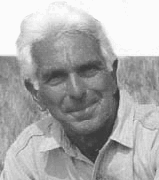Tell Me a Story: The Power of Storytelling
 “Information brings knowledge, but stories bring wisdom.” These words guide my clinical work more than any others, for I have learned that it is the power of the patient’s story, rather than that of the patient’s dogged data, that defines and informs psychotherapy’s curative properties. Or, as Mark Twain once put it, “Never let the truth get in the way of a good story.”
“Information brings knowledge, but stories bring wisdom.” These words guide my clinical work more than any others, for I have learned that it is the power of the patient’s story, rather than that of the patient’s dogged data, that defines and informs psychotherapy’s curative properties. Or, as Mark Twain once put it, “Never let the truth get in the way of a good story.”
Stories breathe, and the storytelling process keeps us alive and psychologically oxygenated. The patient’s tales convey to us everything that we need to know about who they are and what they need. Human beings naturally follow the river of narrative impulse and when the therapist bravely joins them in navigating these currents, treatment is inaugurated.
I find myself most worried about the patients of mine who can no longer tell their story — whether their story is rich or impoverished, elegant or clumsy — or worse, those patients who appear to have lost interest in their story. Our most sacred and potent mission is to help them to recover or re-discover their story, and to re-animate their passion for telling it.
Something crucial is invariably lost when unconscious thoughts and ideas are dragged, sometimes kicking and screaming, into consciousness. There is an unavoidable collapse of one’s personal lexicon at the moment of attempted articulation. But more is gained than lost when the story is told, and the therapist’s primary function is to be the midwife who supports the labor that ushers their epic into the waiting world.
And labor it is, because there is a deep-seated fear that all of us experience when thought and feeling are funneled into language. Telling one’s story means acknowledging the mountainous iceberg of experience that lies beneath that story, an iceberg that mutely lurks underneath enduring and fathomless depths.
So I am interested in the patient’s story, but I become just as interested in what the patient leaves out of the story — which, of course, is its own story. I am tuning in to both what the conscious mind allows to be spoken, and what it has disallowed, what remains, for whatever reasons, unspeakable. As noted above, we are all driven by the narrative impulse, but we are simultaneously driven by the fear of that impulse, the terror of the anarchic shadow story that, like a dream, resists comfortable formats and inevitably illuminates the darkened shadows of the troubling unconscious. So our work entails listening to what is said, and listening for the unsaid that lies outside of or on the margins of the story, the “anti-story” that simultaneously conceals and reveals itself in the language of plangent silence.
Meaningful therapy depends upon a careful exploration of the patient’s determined effort to deploy certain words while eschewing others, to articulate certain phrases while muting others, to recount certain tales while silencing others. This complex calculation results in the series of linguistic choices that govern the nature and texture of the therapeutic conversation.
In that context, the meaning of the patient’s told and untold story and the meaning of the patient’s lived and unlived life are terminally bound up with each other and cannot and should not be disentangled.
There is a transcendent wisdom to the patient’s language that, when recognized, is unsurpassed when it comes to finding ways to be more fully human, to once again feel whole. The most important request a small child makes is, “Tell me a story.” When we make the same request of our patients, the story of their healing is summoned and finally allowed to begin.

 BOL: I hope our conversation will focus on the how-to of intervening in order to enhance the performance of organizations. You are a master of that art, but your most important work has focussed elsewhere: on understanding the nature of the organization,...
BOL: I hope our conversation will focus on the how-to of intervening in order to enhance the performance of organizations. You are a master of that art, but your most important work has focussed elsewhere: on understanding the nature of the organization,...  BOL: Alfred Adler’s name is better known to today’s therapists than are his ideas and methods. Your dedication to this body of work must be based on the belief that contemporary practice is diminished because Adler’s contributions are not...
BOL: Alfred Adler’s name is better known to today’s therapists than are his ideas and methods. Your dedication to this body of work must be based on the belief that contemporary practice is diminished because Adler’s contributions are not...